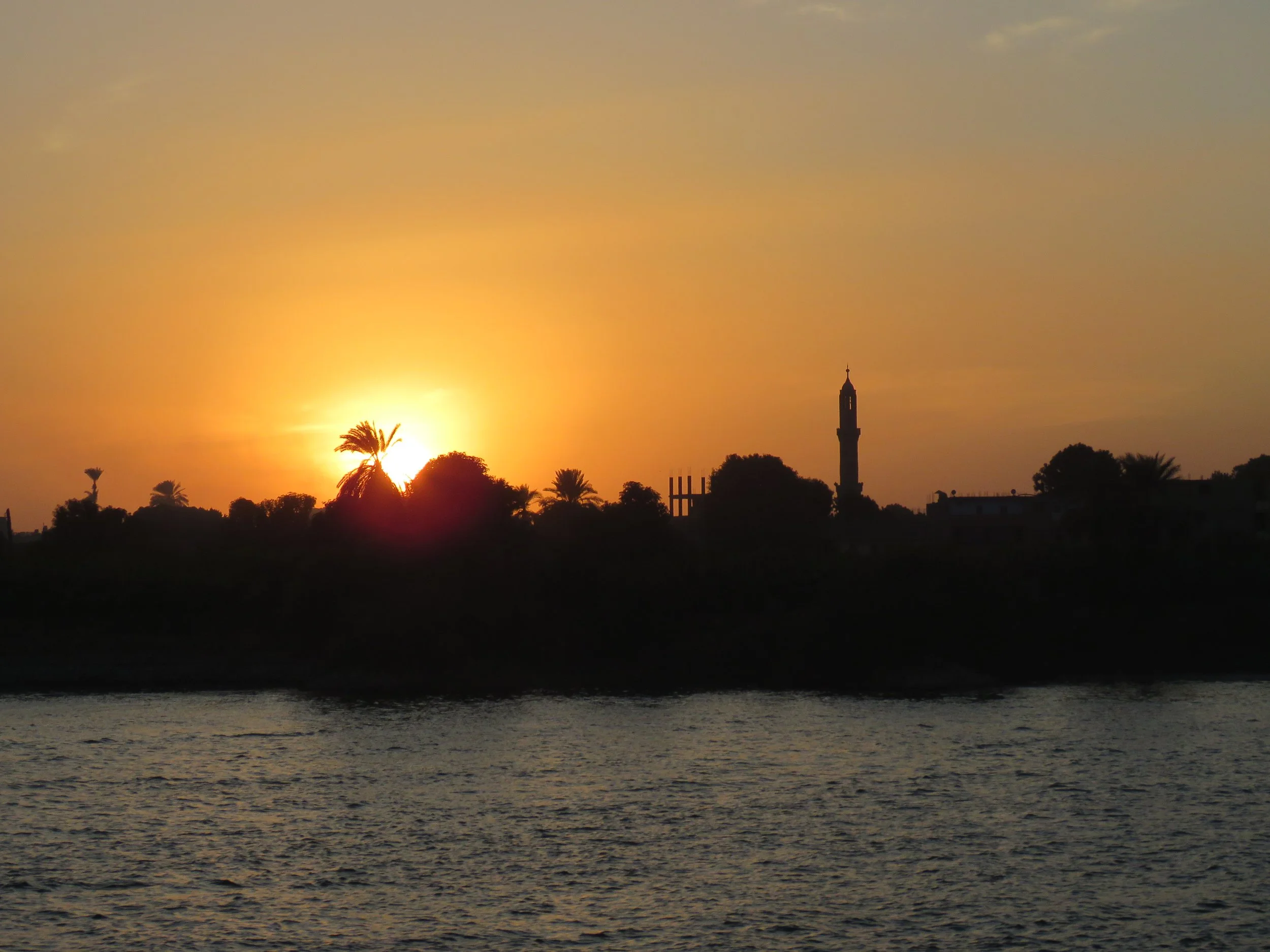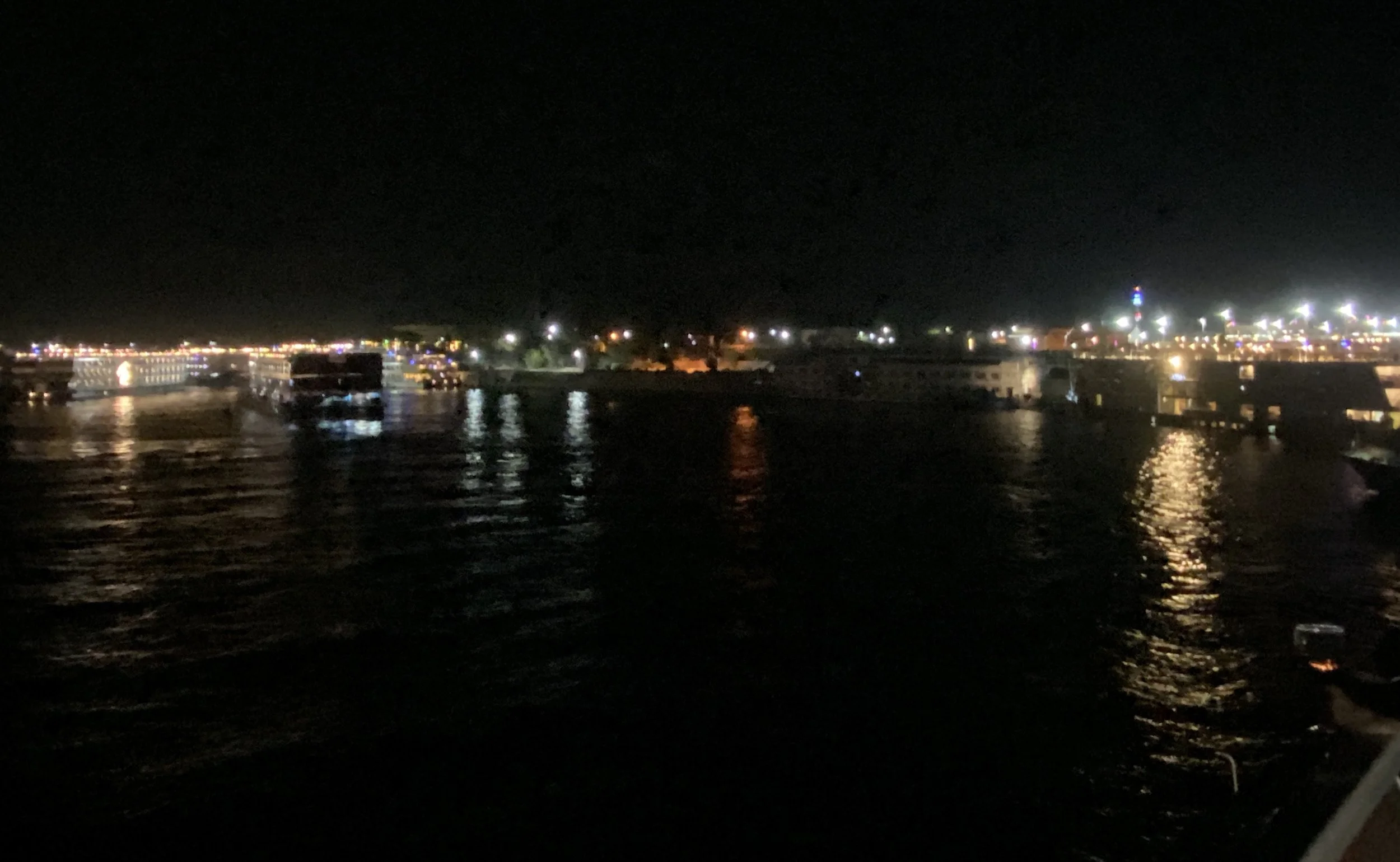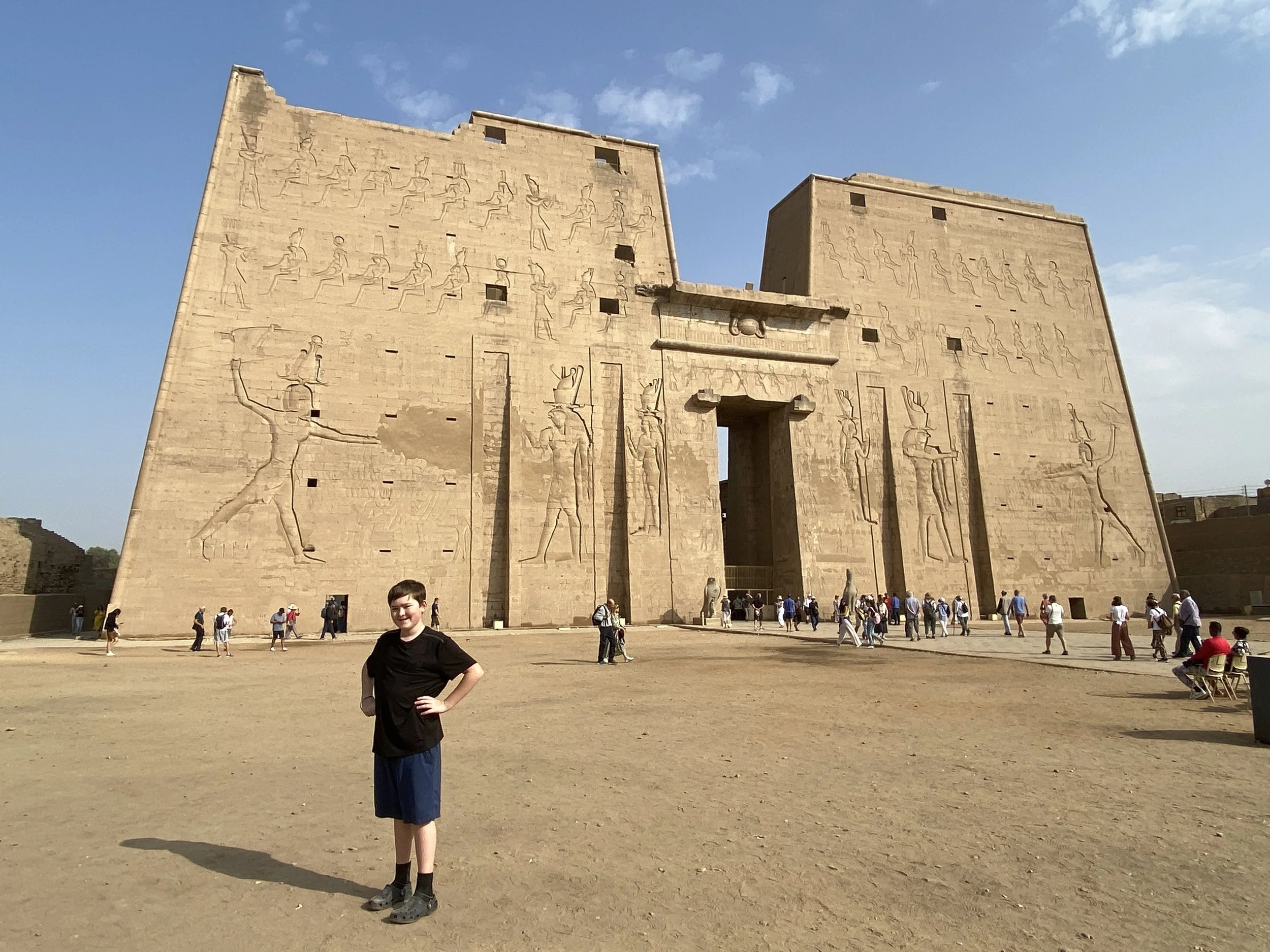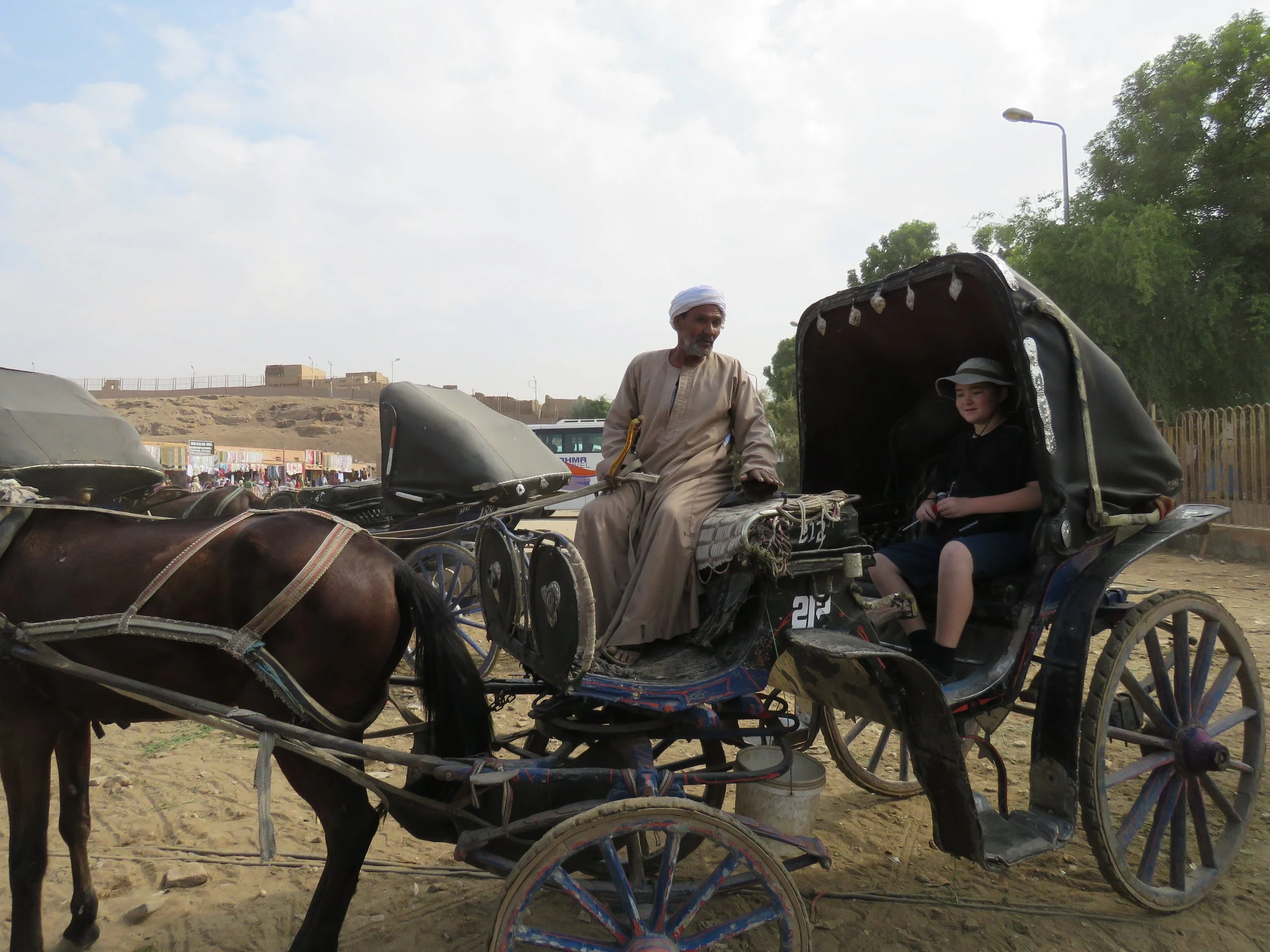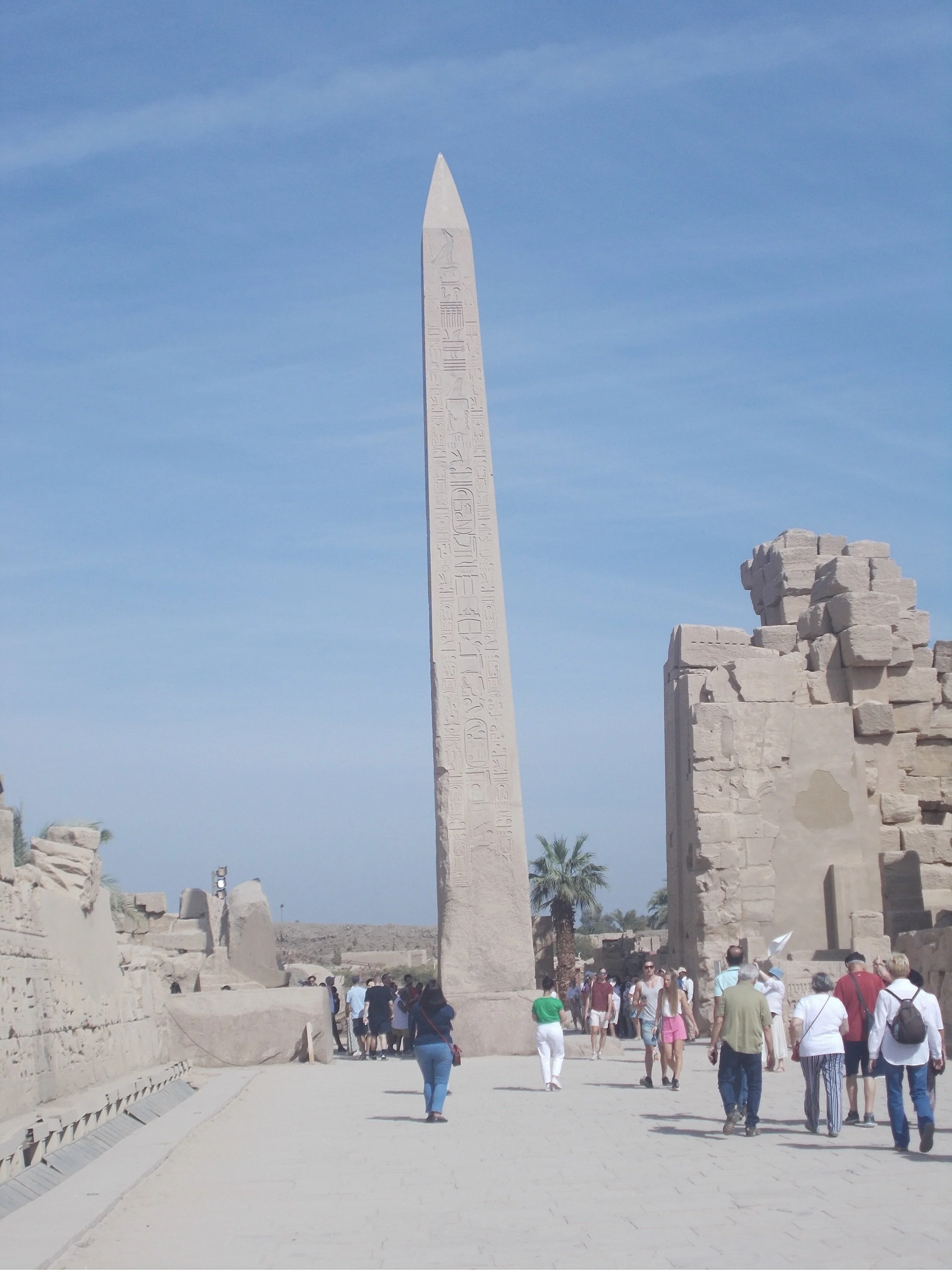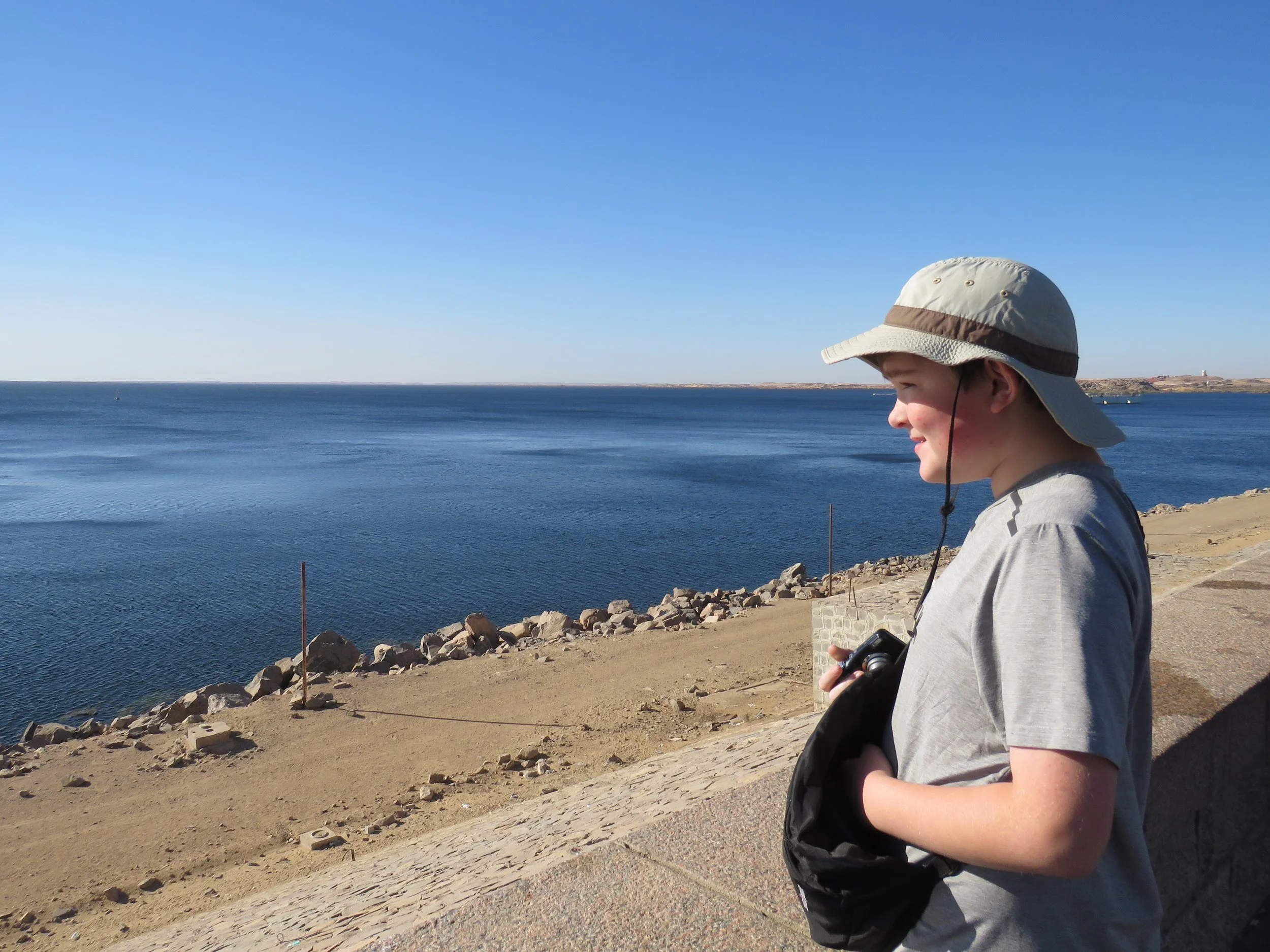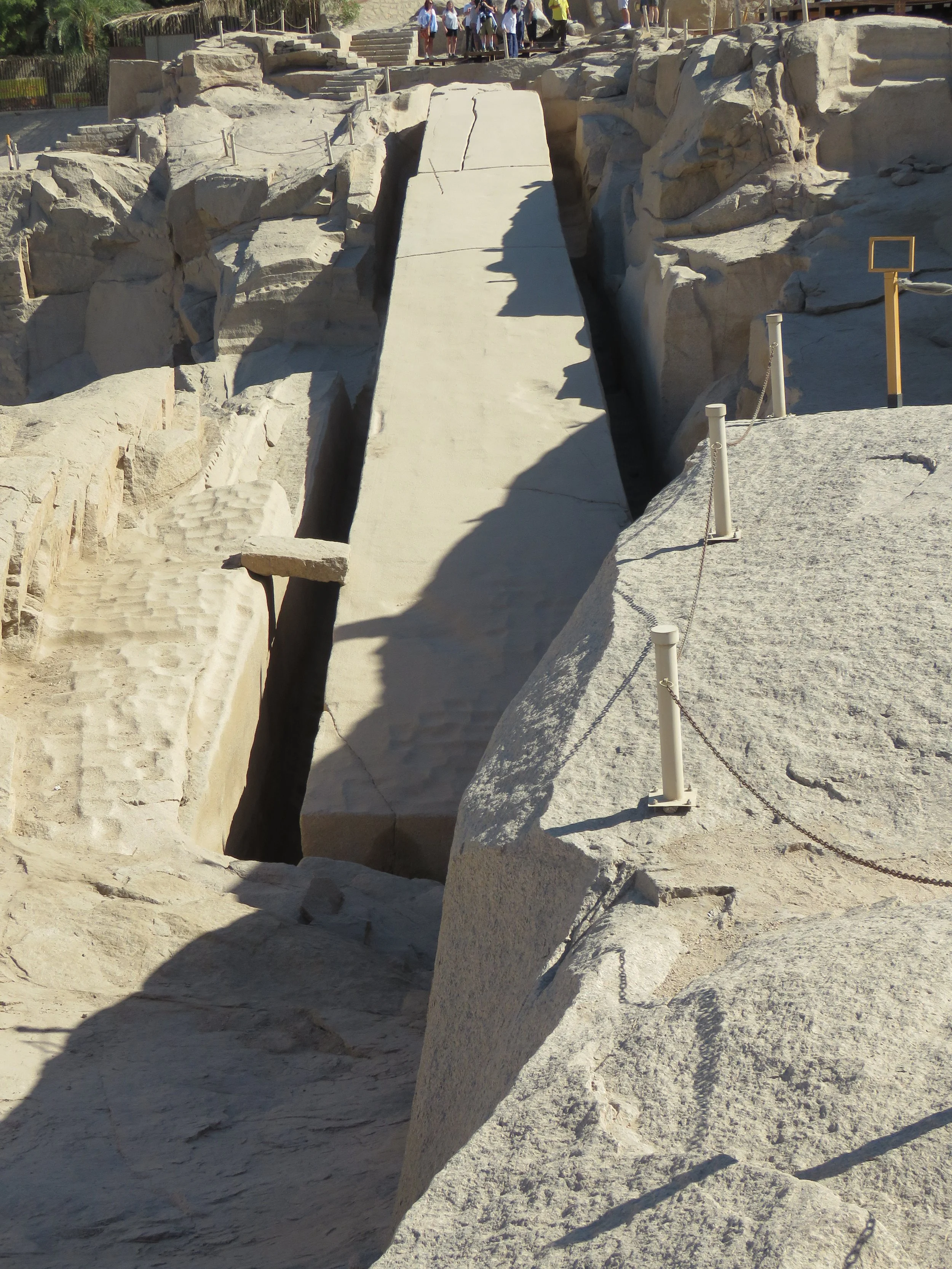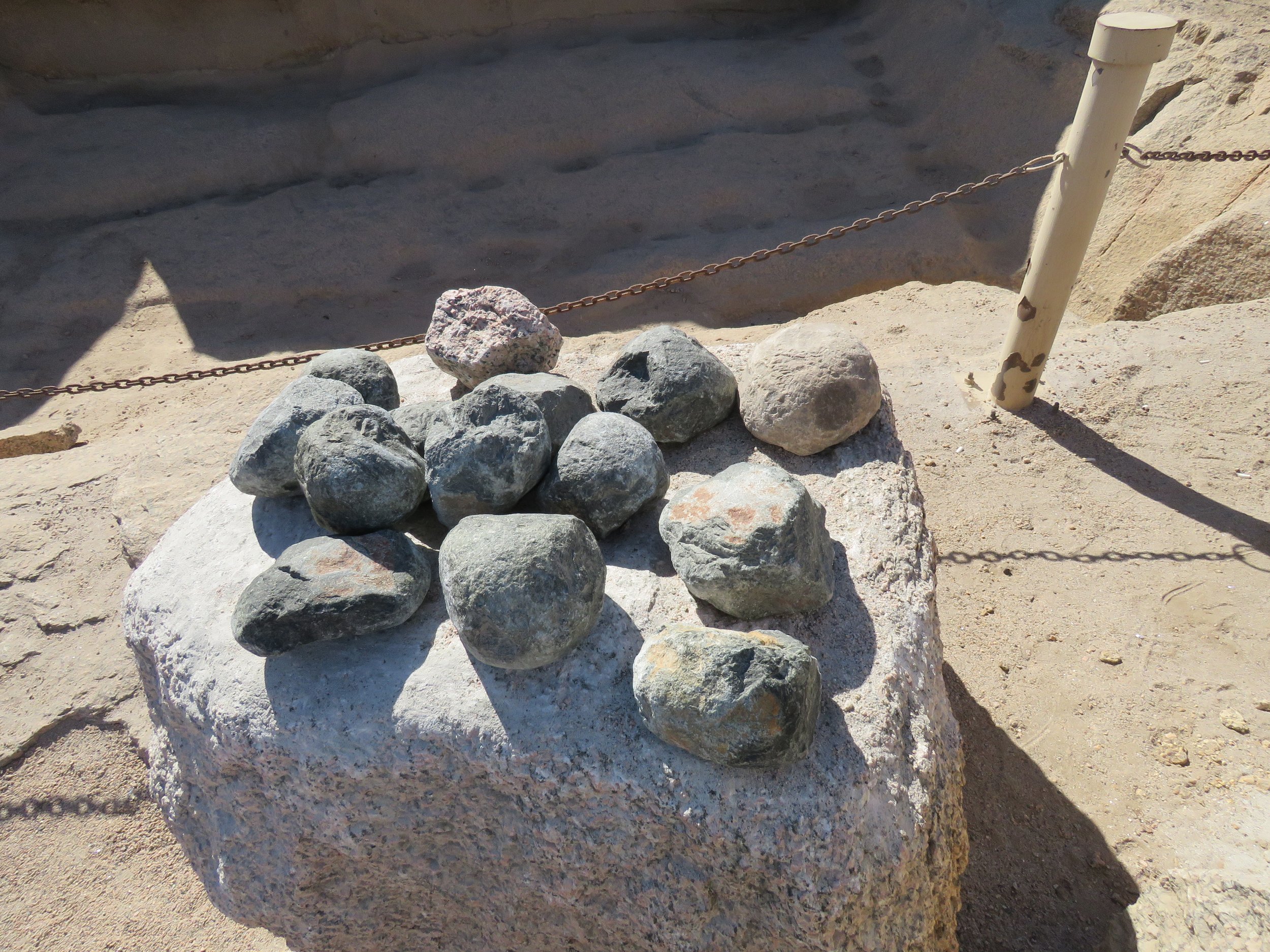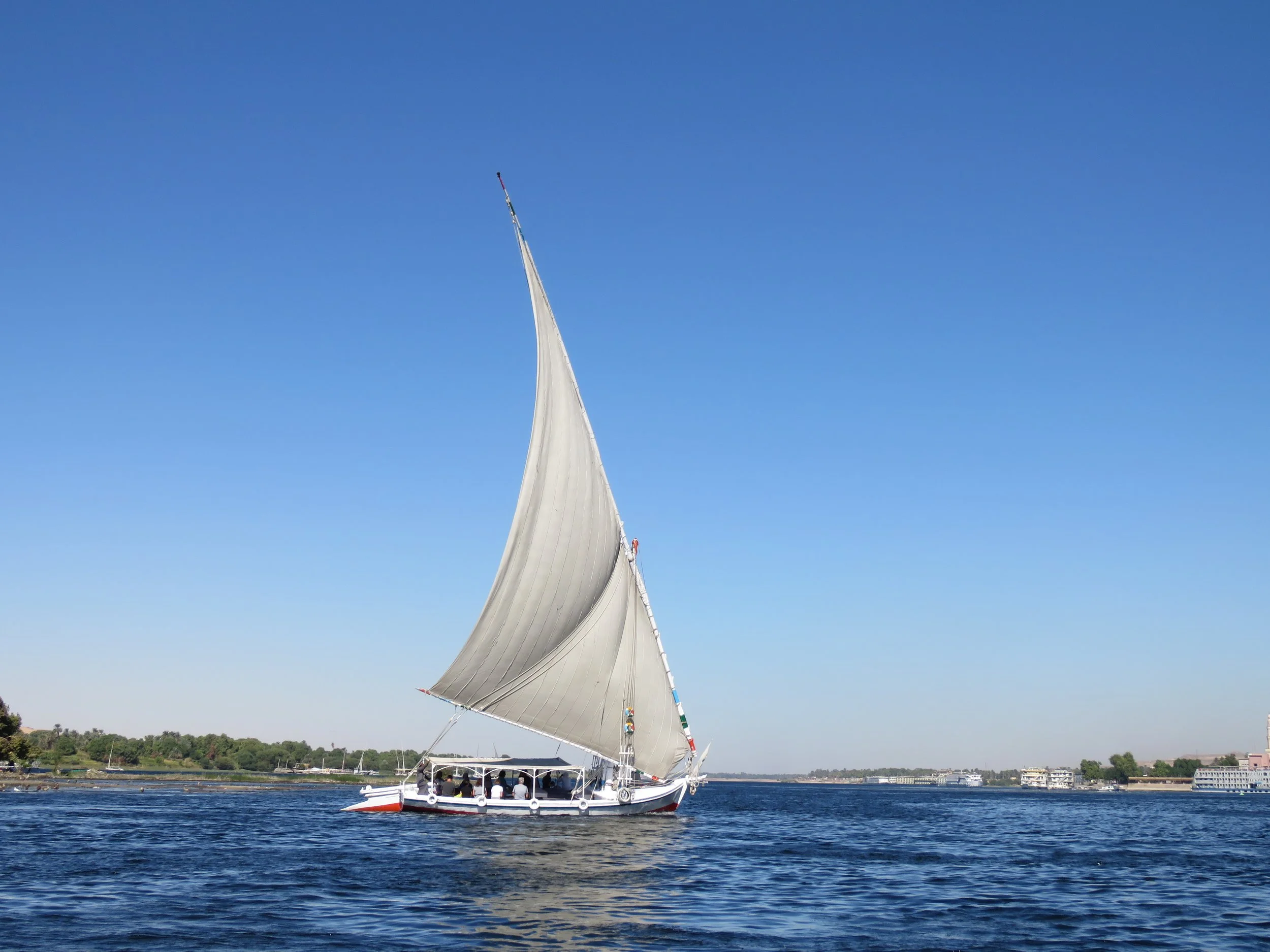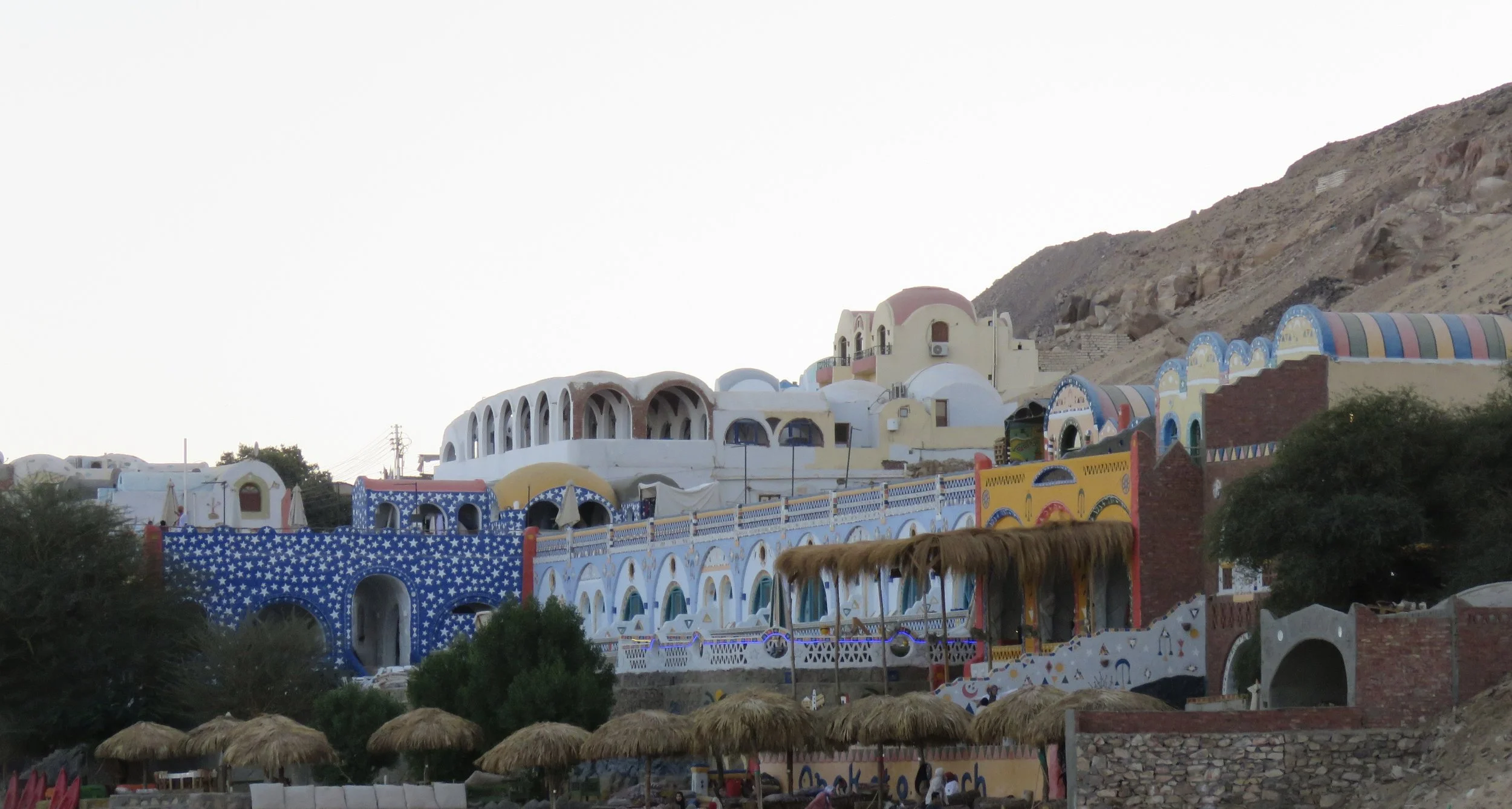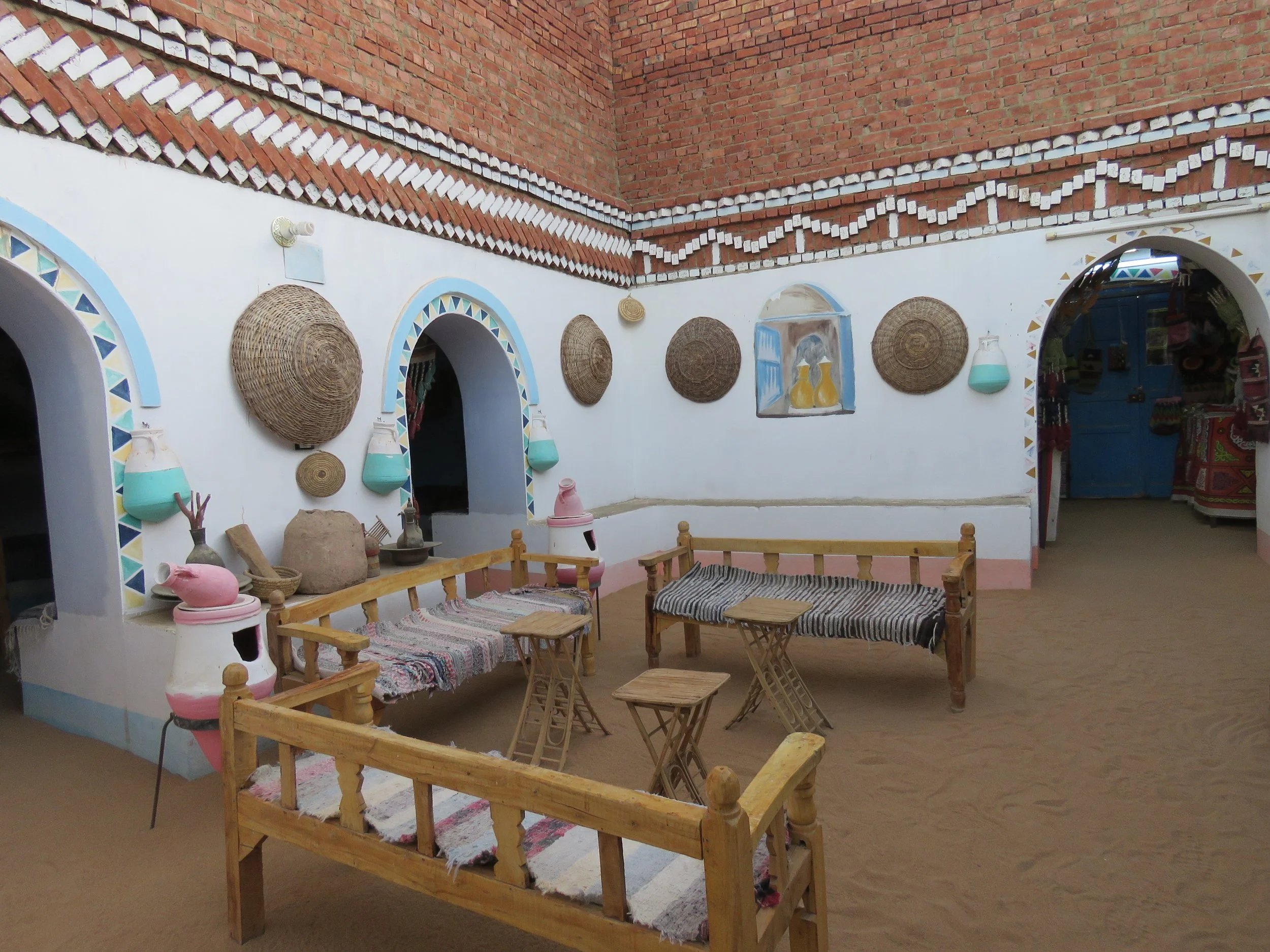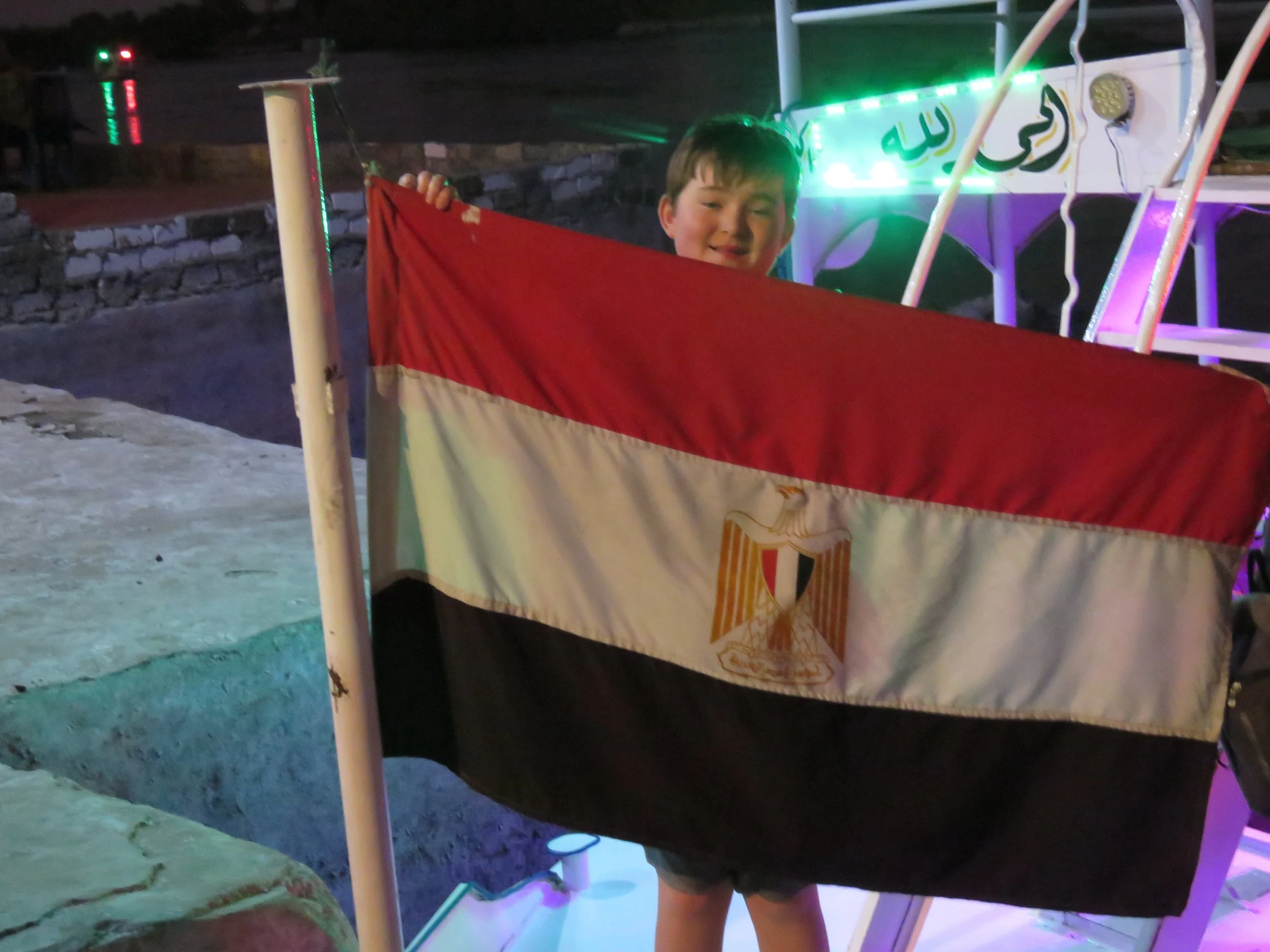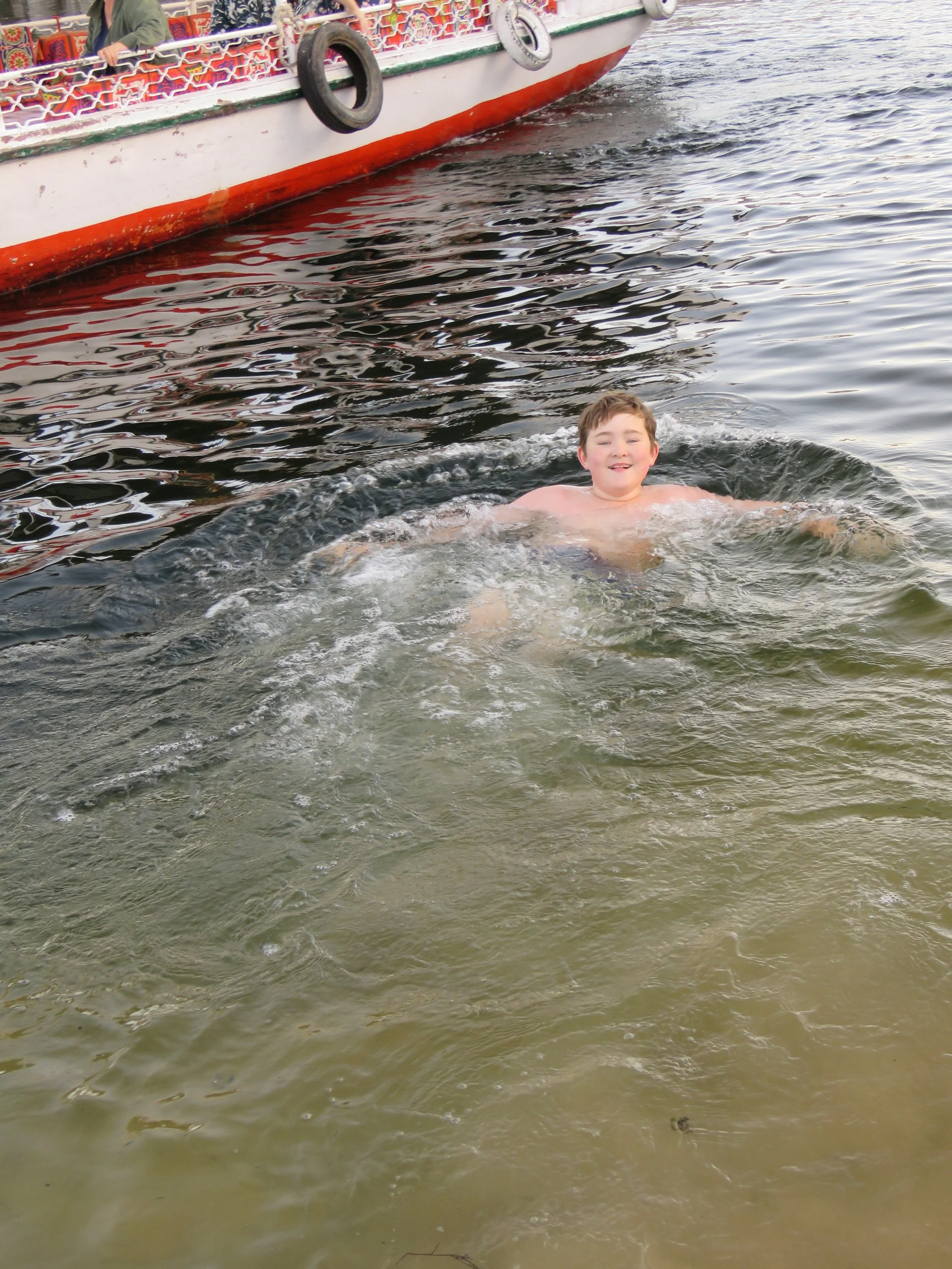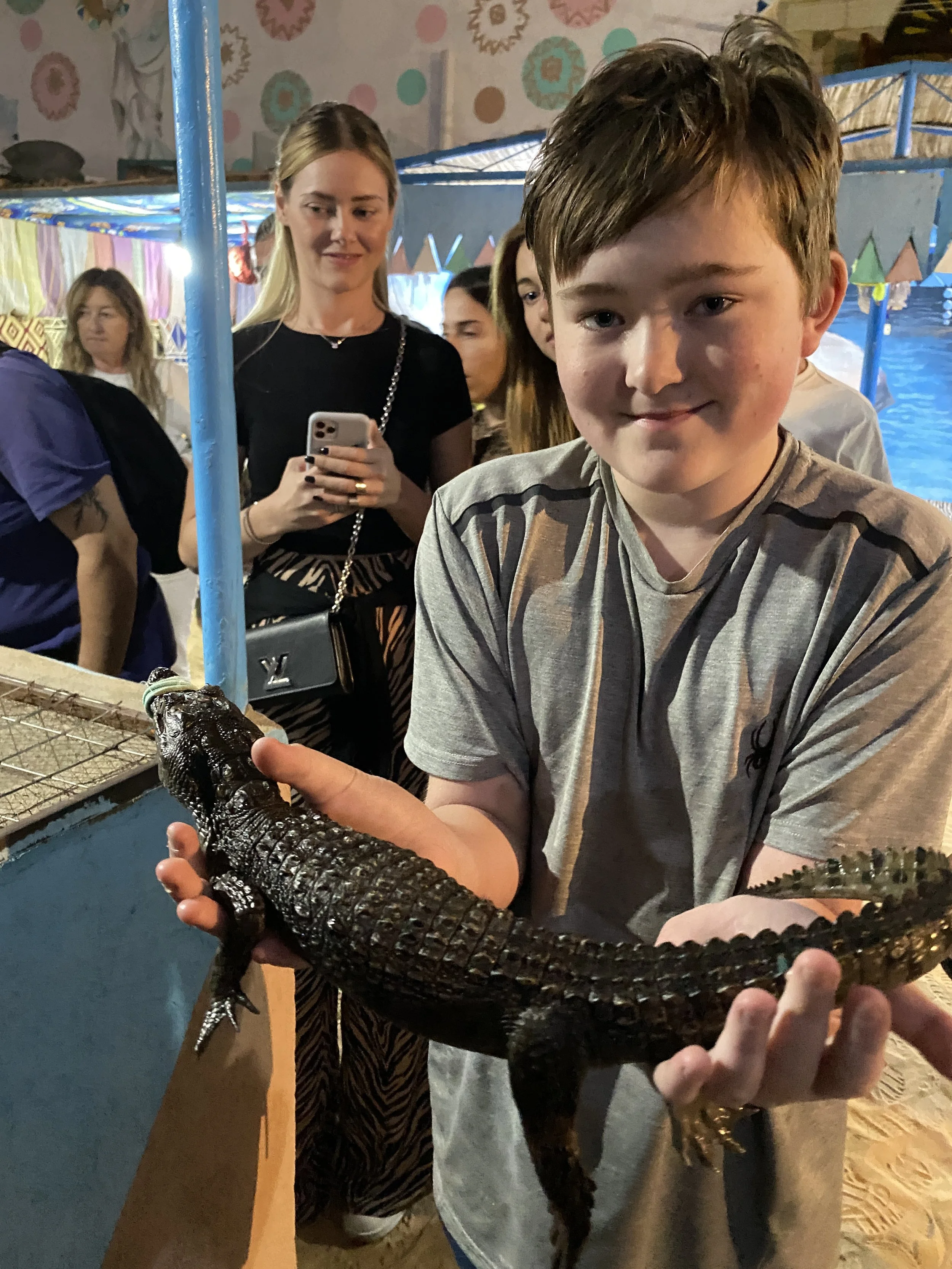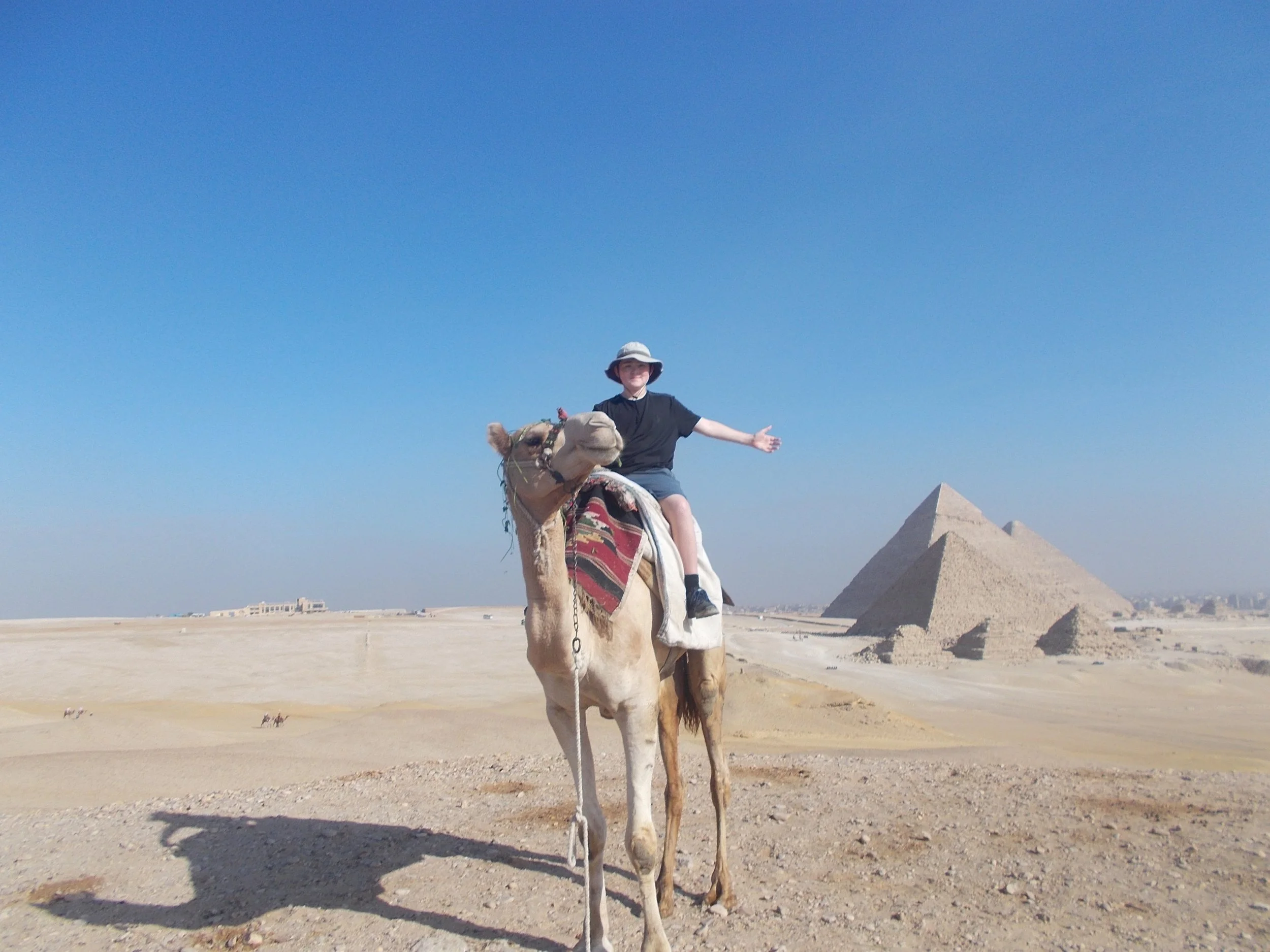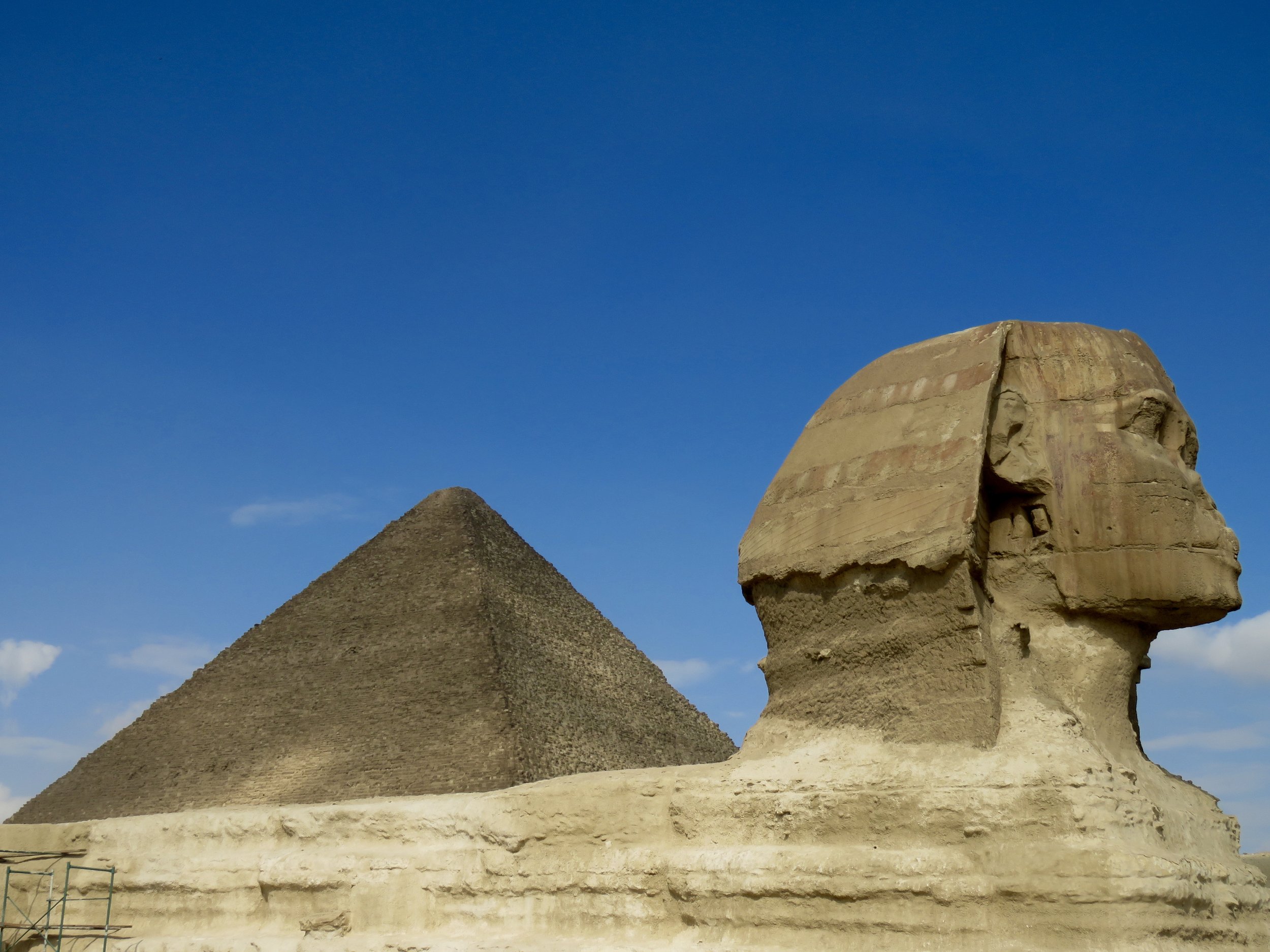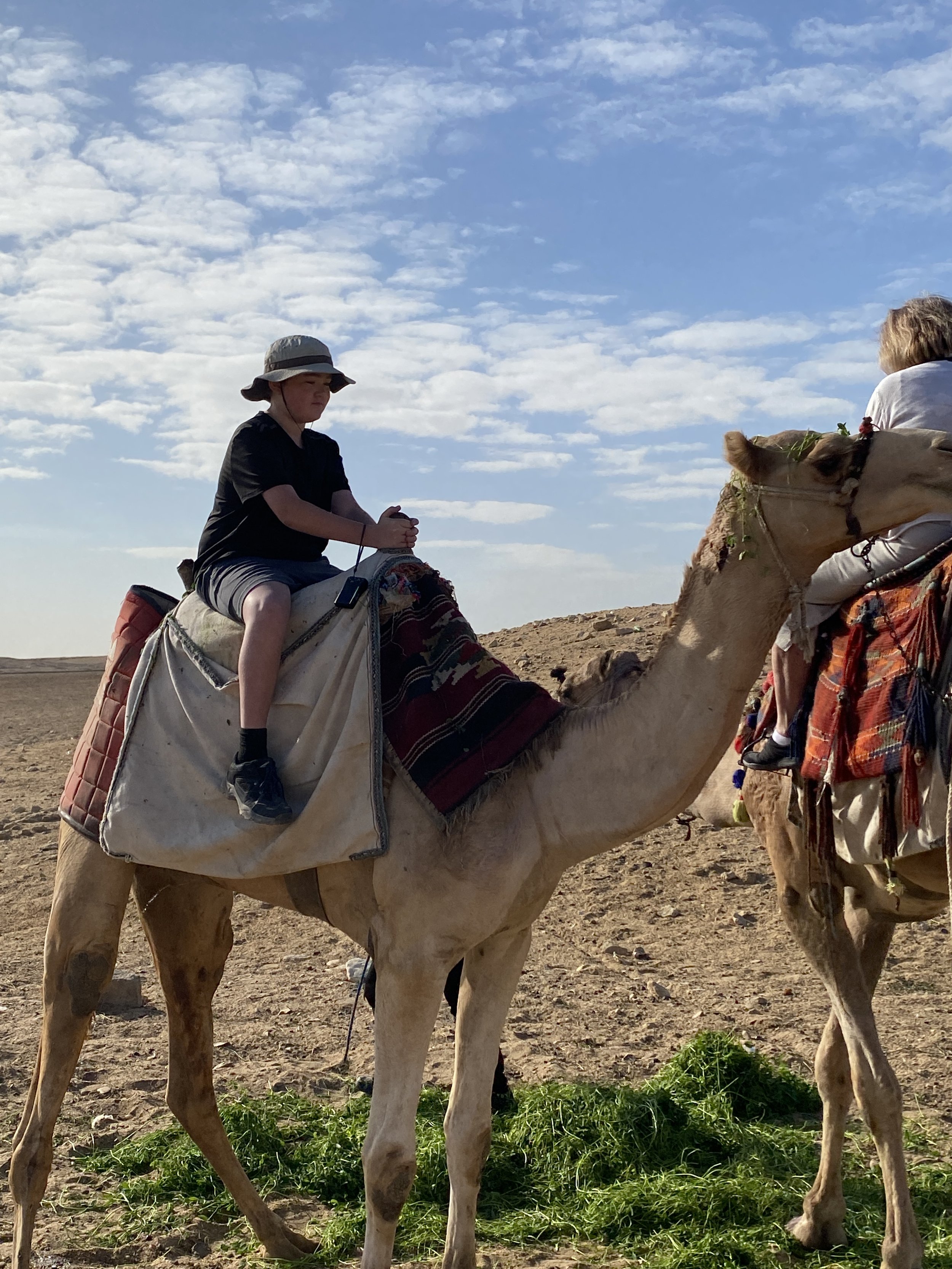For this last segment of our recent Egypt trip, we’ll take you along the Nile and back north to the pyramids.
Sailing south on the Nile means you are traveling up stream, towards it source. After our cruise boat left Luxor, we reached the locks on the Nile in the dark.
The next morning we woke up to find ourselves at Edfu - an amazing temple complex built by the Greeks for the Egyptian gods, during the era of Alexander the Great. After admiring the architecture, the many hieroglyphs, walls and pillars (including a real live owl that looks like he was carved from stone), we returned to the boat by horse carriage.
These cruise boats provide a livelihood to so many people living here: horse and carriage drivers, photographers, souvenir sellers, guides, but also the people who provide food for the horses and much more. Edfu seemed to have more poverty than other Egyptian towns we saw and Nico was quite shocked by the number of kids begging or selling trinkets.
We visited the temple of Kom Obo at night, which was fun because the lighting give it a totally different feel from the harsh daytime sun. We enjoyed Kom Obo despite a huge number of tourists. Nico was especially thrilled by the many mummified crocodiles. Why pharaohs had to take those to the afterlife, I don’t know.
Aswan, the most southern city in Egypt, seemed clean and prosperous. Medians with flowers and a nice boulevard along the Nile made it more inviting than other cities. I was surprised to learn that 5 million people live here.
Lake Nasser
We visited Lake Nassar’s High Dam. This is the largest manmade lake in the world.
Another fascinating site was the Unfinished Obelisk. Here is where archeologists have learned how obelisks were actually carved.
It is believed that Queen Hatschepsut ordered this particular obelisk, some 3,500 years ago, for Amun’s Temple. It would have been the tallest one ever, enormous in size and weight.
The workers carving the stone, outlined the structure and pounded with nothing more than stone balls. Amazingly, the stone balls are still there and you can touch them. We marvelled at the fact that they were able to cut through massive stone to create such a straight obelisk. Later it would be raised up. However, after seven months of hard labour, the stone cracked lengthwise… leaving the obelisk useless and all the work in vain. Hatschepsut must have been furious but to archeologists this was a stroke of luck, allowing them all these centuries later to learn how these tall Egyptian monuments were created. This site was discovered in the early 1900’s buried under sand and well preserved. It is now a UNESCO World Heritage site.
One afternoon we enjoyed a quiet sail in a falucca, a traditional wooden sail boat on the Nile. We sailed right passed Elephantine Island which I recogized from several favorite books about Egypt, including Down the Nile: Alone in a Fisherman's Skiff by Rosemary Mahoney.
Another night we boarded a small motorboat which took us to a Nubian village. Nubians are the original ethnic people who lived in northern Sudan and southern Egypt. They speak a Nubian language and can live in traditional villages (Nubian goats come from here!).
The colourful, arched houses were so different from anything else we’d seen. We sat in an inner court yard and enjoyed tea, bread and Nubian sauces. Nico’s highlight was holding a tiny crocodile.
But perhaps even more special and fun was swimming in the Nile here. The sloping sand beach allowed us to wade in and actually swim.
From Aswan we flew north to Cairo for the grand finale of our trip: the pyramids. Again, these iconic tombs are located on the west bank of the Nile. The largest, Great Pyramid of Giza, was built to honor Khufu, the second king of Egypt’s 4th dynasty, and was completed about 2560 BCE. This World Wonder stands 230 meters tall.
Not only is it made up off approximately 2.3 million blocks of stone which were cut, transported, and assembled to create this almost 6-million-ton structure, it is a masterpiece of technical skill and engineering ability. It has rooms and corridors inside. How did they have this skill and technology almost 5,000 years ago? And it’s still standing today!
You can go inside this pyramid (for a price) but we didn’t since there is nothing inside, only a dark stone space. Nico did however enjoy his long-awaited camel ride here!
Just south of the pyramids is the Great Sphinx - one of the world’s largest sculptures, measuring some 240 feet (73 metres) long and 66 feet (20 metres) high. It features a lion’s body and a human head adorned with a royal headdress. The statue was carved from a single piece of limestone, that likely dates from the reign of King Khafre (c. 2575–c. 2465 BCE) and depicts his face. Although he did have a nose! No one knows when, why or how the Sphinx’s nose was removed…
Nico and I were heading home the next day, our packs loaded with gifts of papyrus and Egyptian cotton for our family back home. And so grateful to have been able to visit this special, ancient place on earth.
BOOKS
Resources:
• https://www.luxorandaswan.com/Egypt/nile-cruises/luxor-aswan-nile-cruises
Our last nights in Egypt, we stayed here:
https://www.movenpick.com/en/africa/egypt/cairo/hotel-cairo-media-city.html (This was the nicest hotel of them all although the water in the pool was too freezing to use it.)
